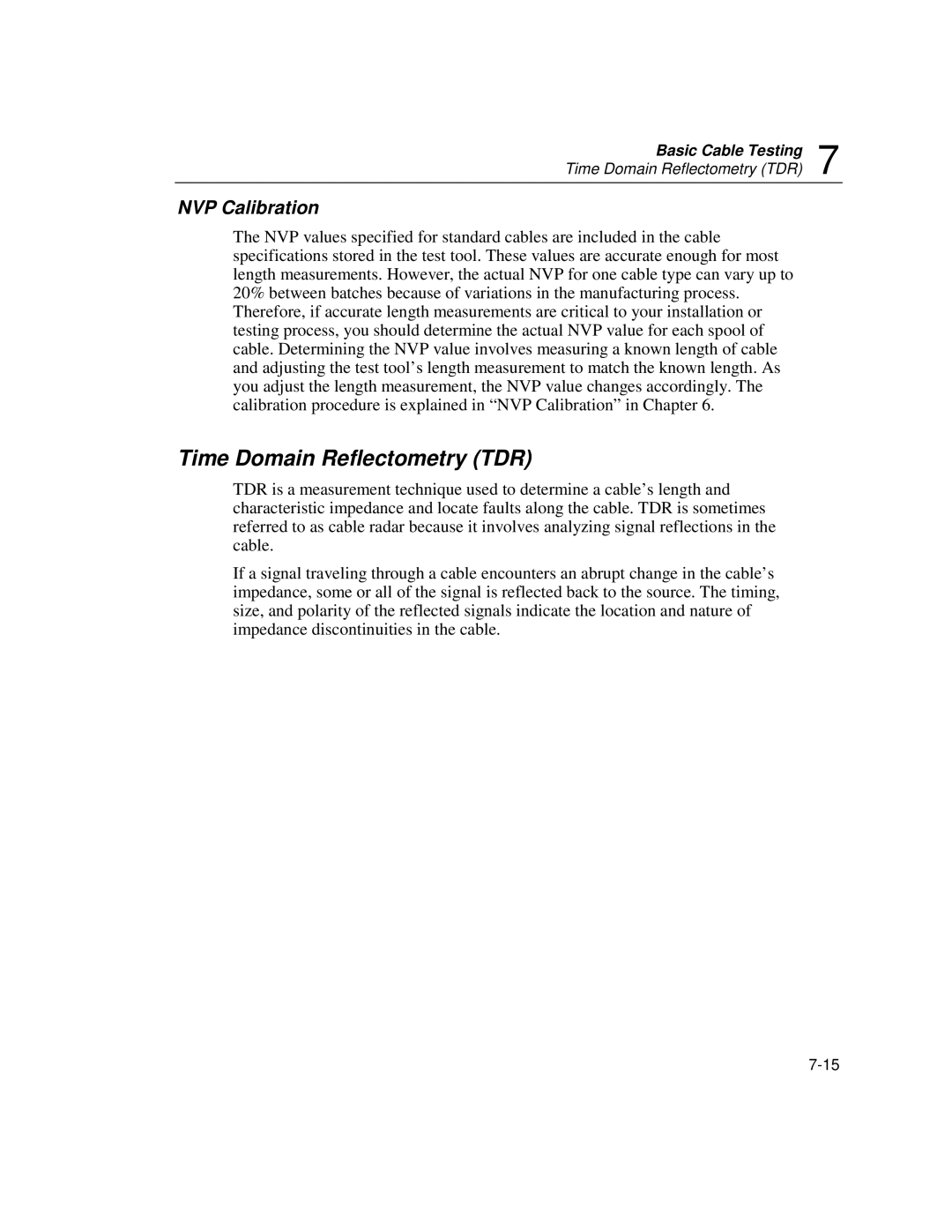Basic Cable Testing 7
Time Domain Reflectometry (TDR)
NVP Calibration
The NVP values specified for standard cables are included in the cable specifications stored in the test tool. These values are accurate enough for most length measurements. However, the actual NVP for one cable type can vary up to 20% between batches because of variations in the manufacturing process. Therefore, if accurate length measurements are critical to your installation or testing process, you should determine the actual NVP value for each spool of cable. Determining the NVP value involves measuring a known length of cable and adjusting the test tool’s length measurement to match the known length. As you adjust the length measurement, the NVP value changes accordingly. The calibration procedure is explained in “NVP Calibration” in Chapter 6.
Time Domain Reflectometry (TDR)
TDR is a measurement technique used to determine a cable’s length and characteristic impedance and locate faults along the cable. TDR is sometimes referred to as cable radar because it involves analyzing signal reflections in the cable.
If a signal traveling through a cable encounters an abrupt change in the cable’s impedance, some or all of the signal is reflected back to the source. The timing, size, and polarity of the reflected signals indicate the location and nature of impedance discontinuities in the cable.
